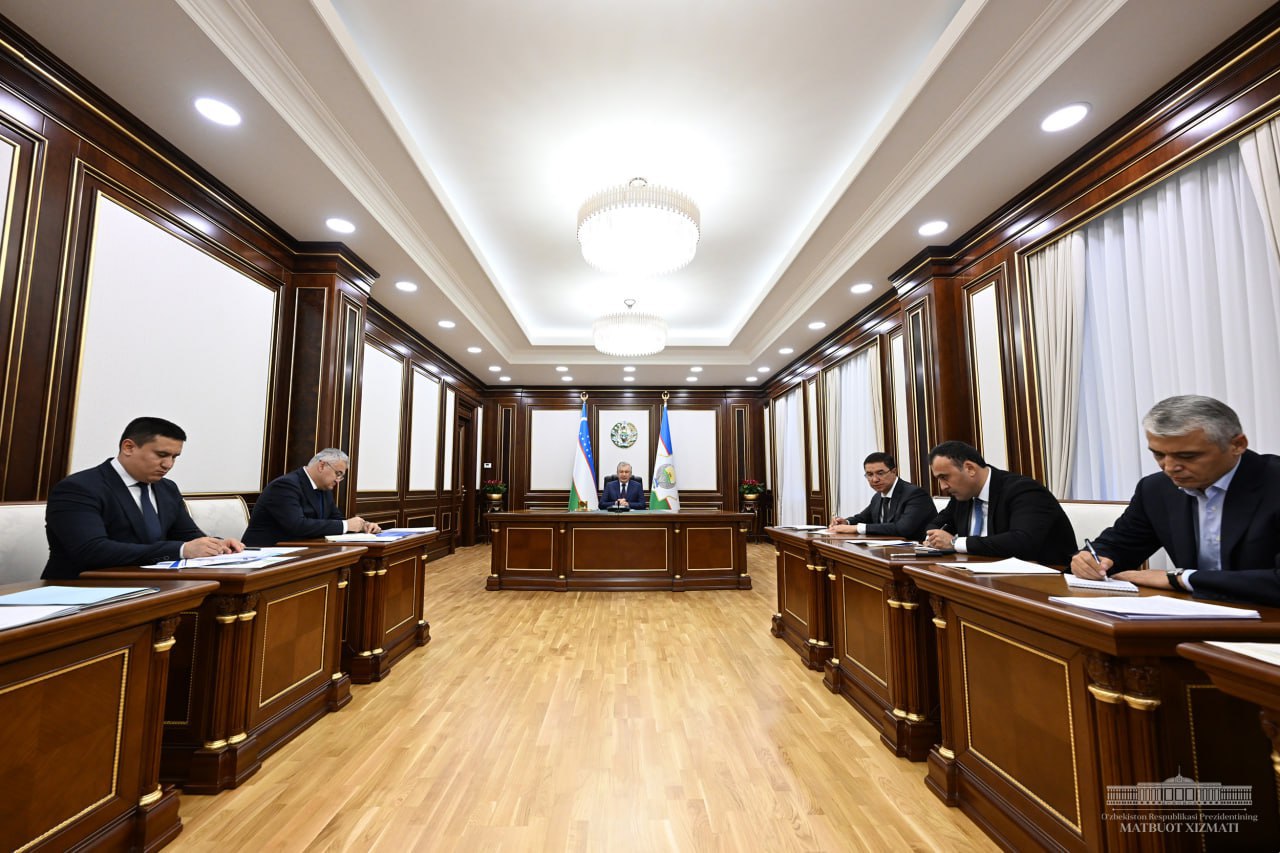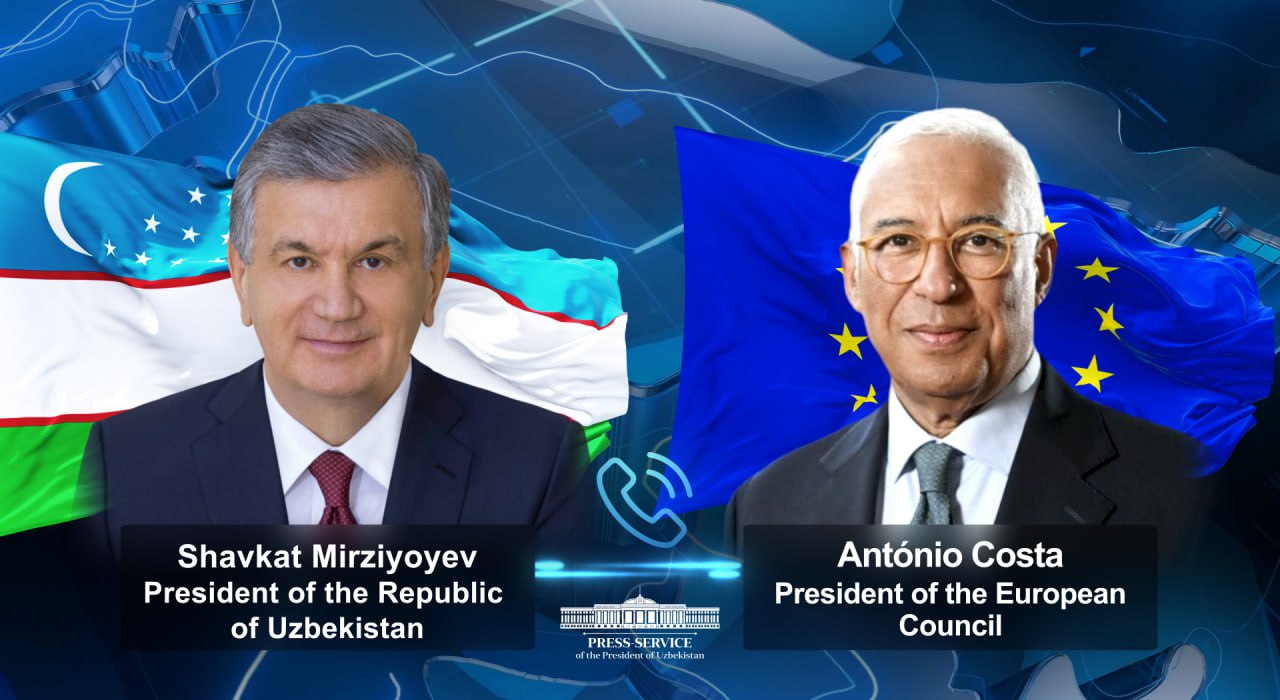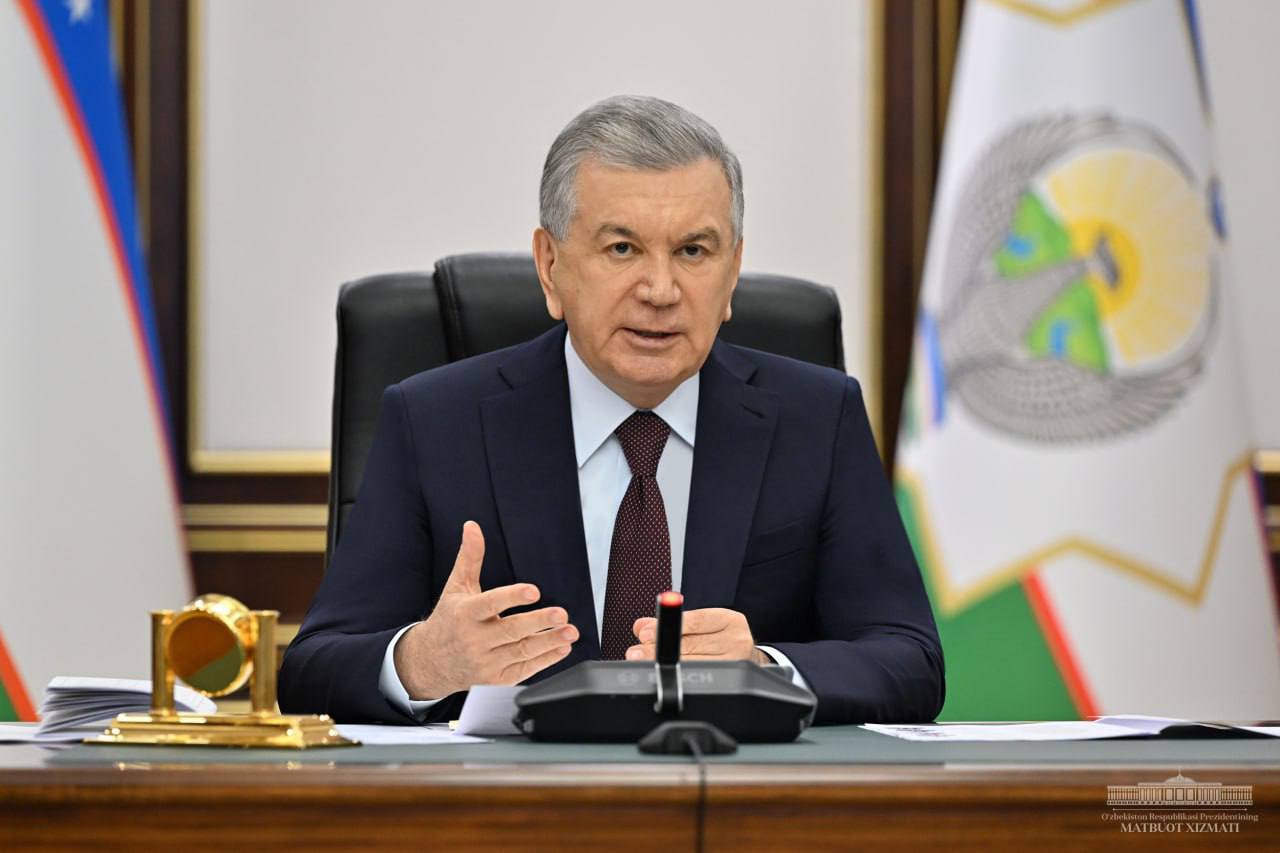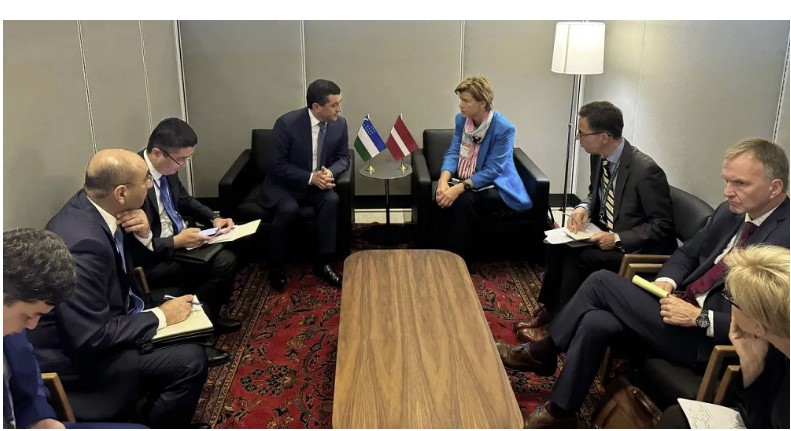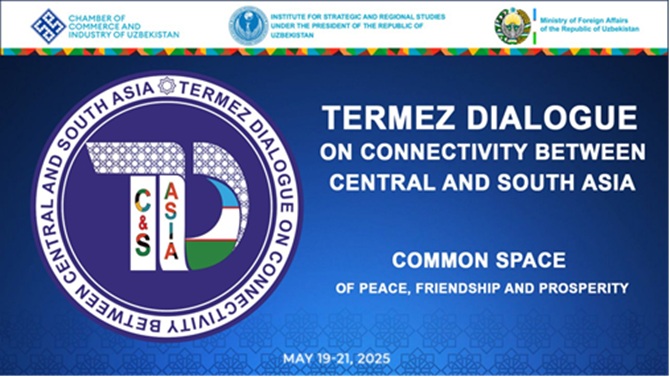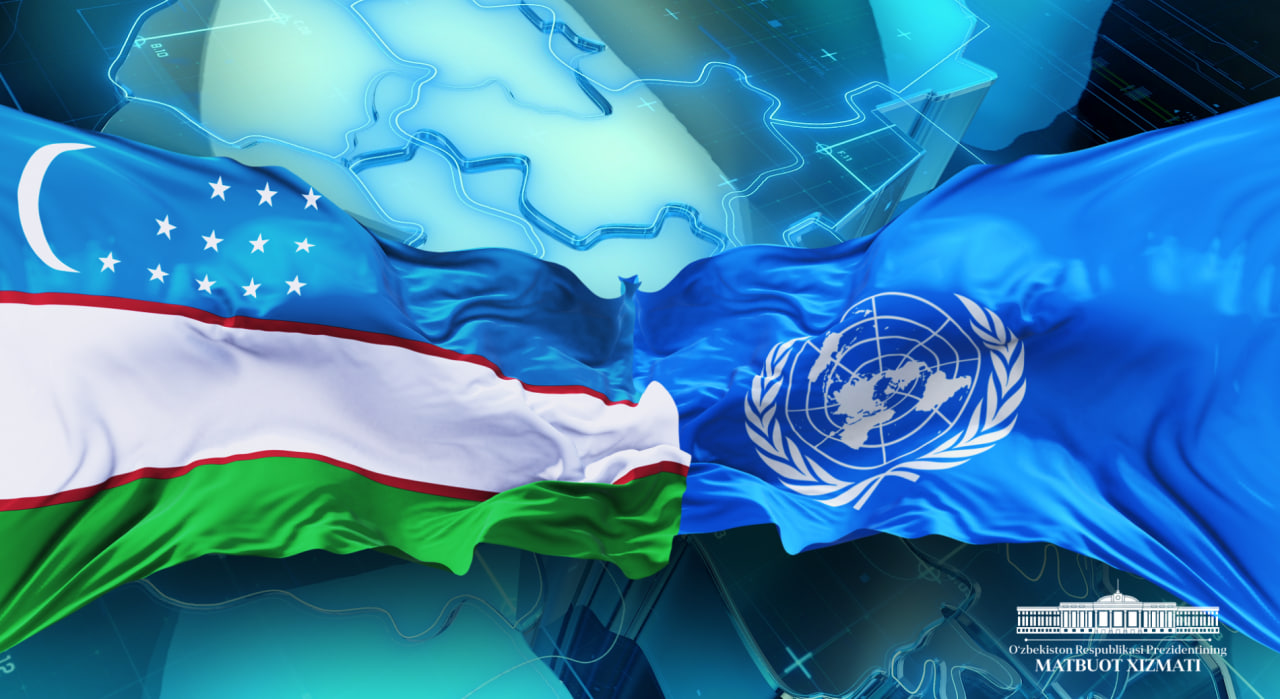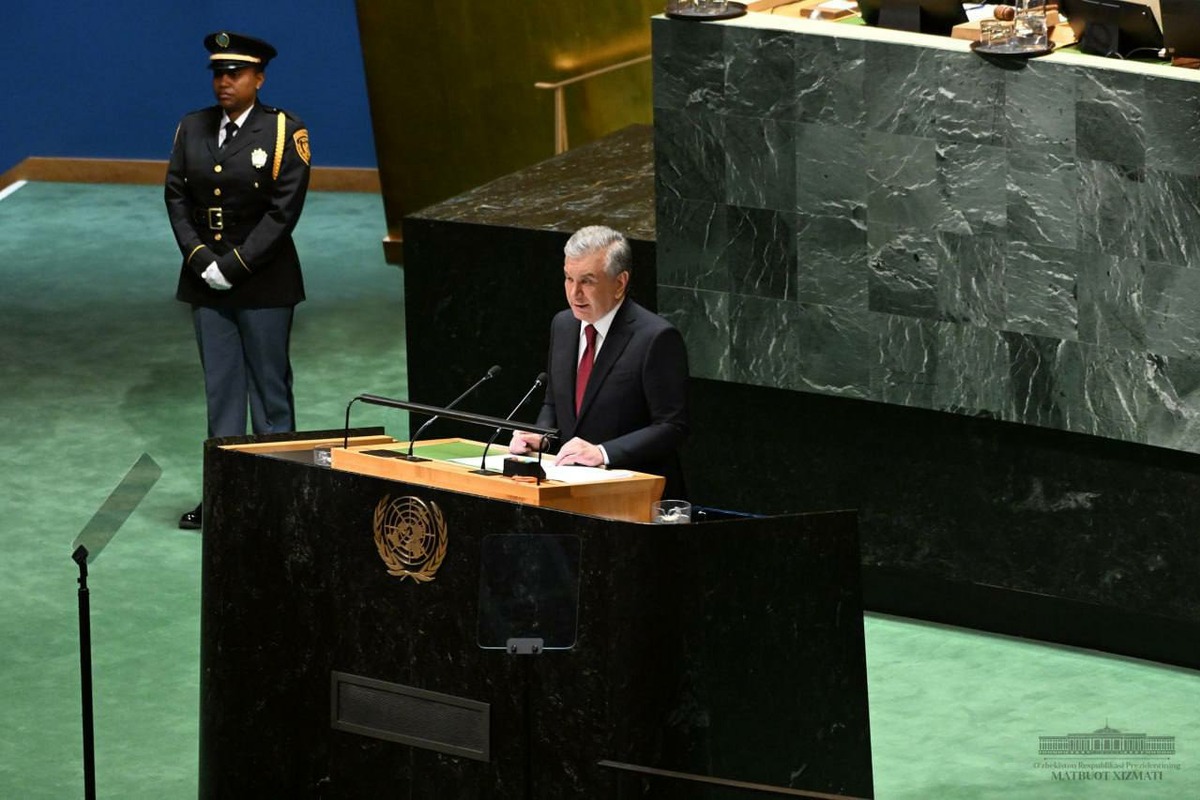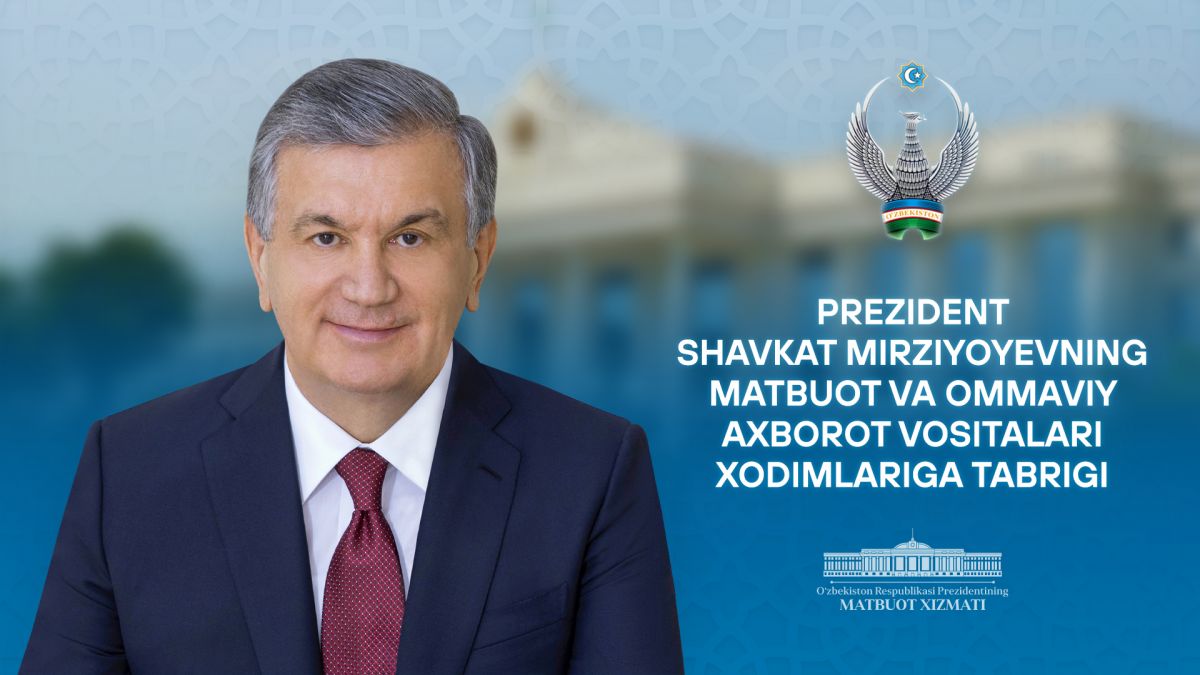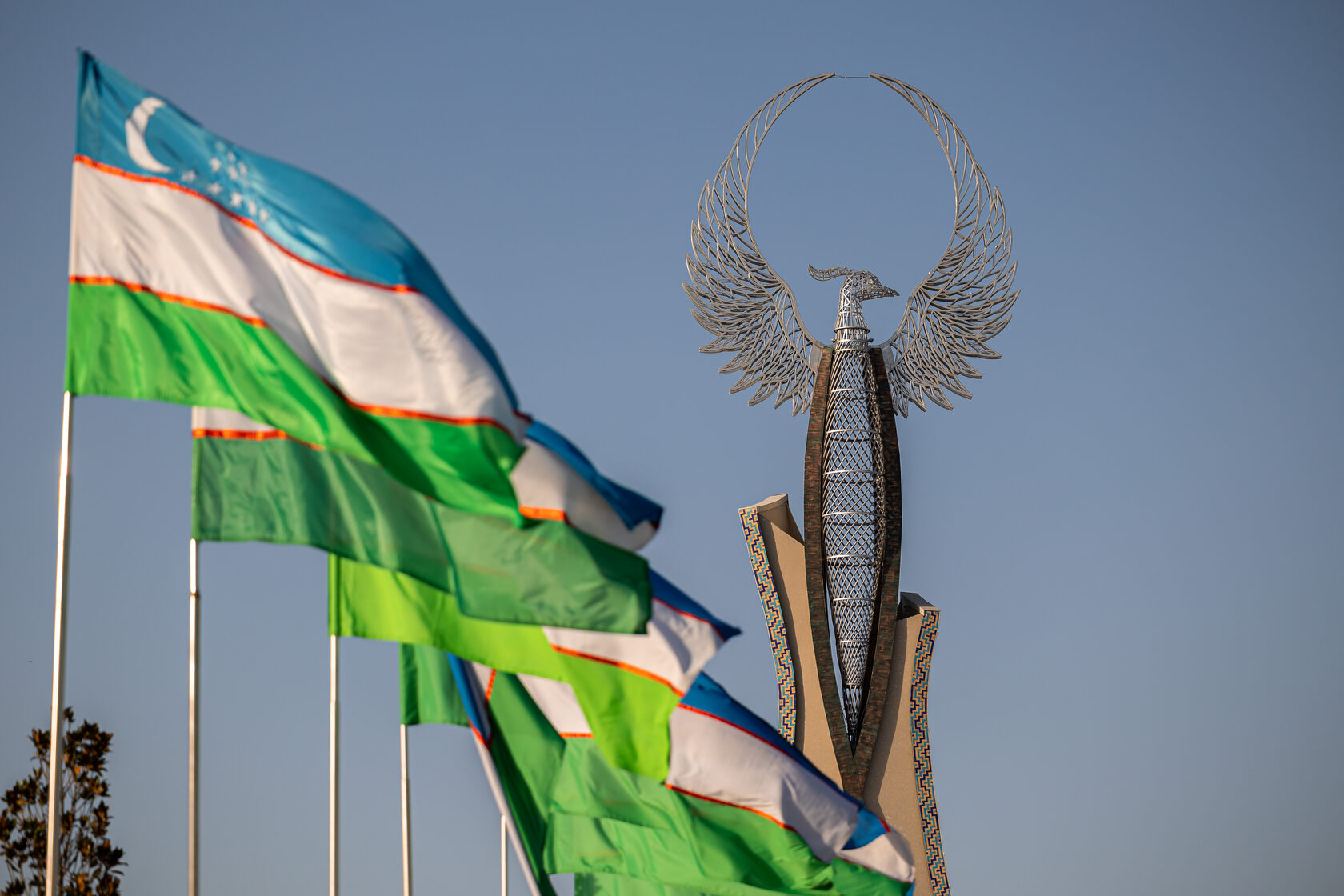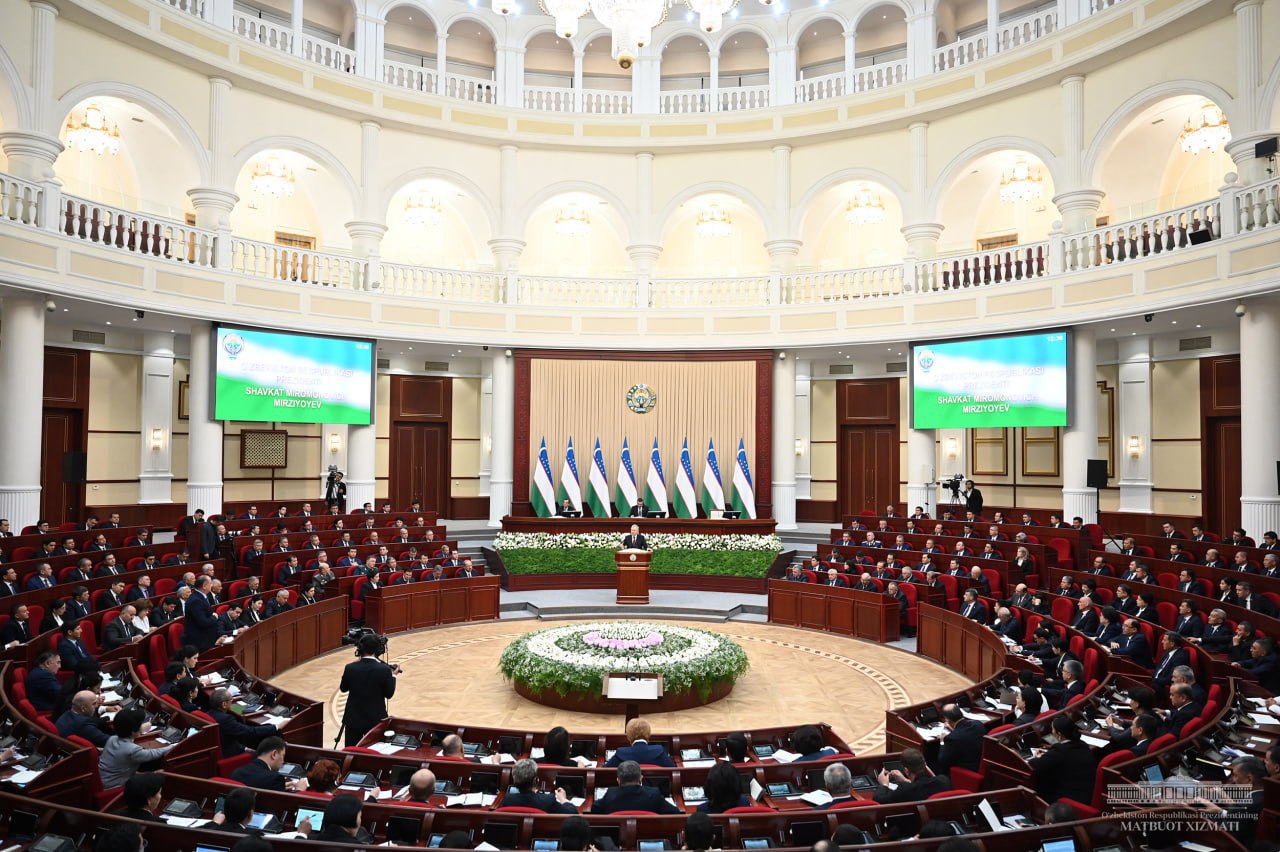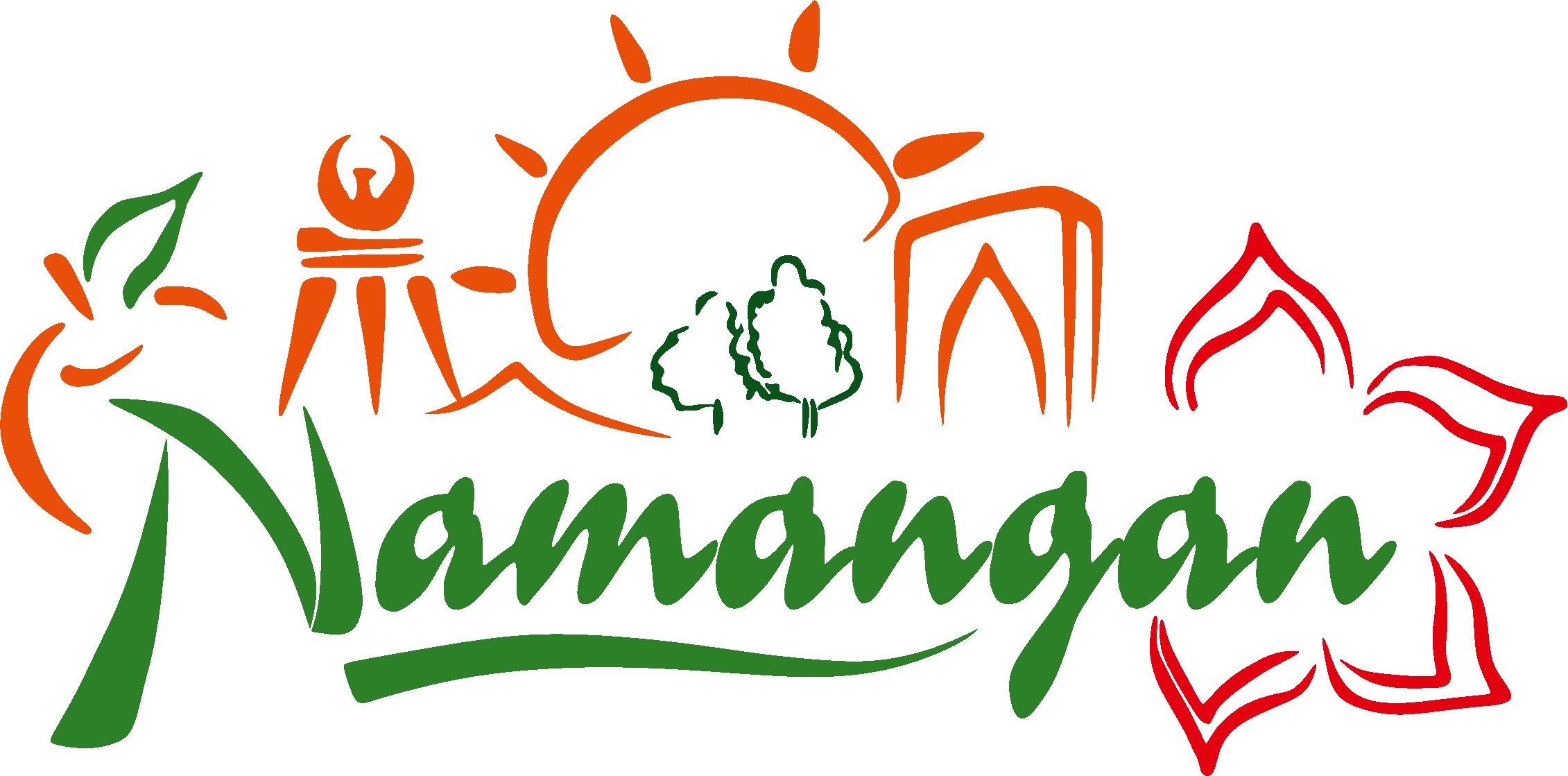Phone
Consular Issues
Phone
Uzbekistan news
We recommend
Reported on the progress of the development of neighborhood and city master plans
📅 19.06.2024
The head of our state familiarized himself with the presentation on the development of master plans of districts and cities.
This task was set at the video conference call dedicated to priority tasks in the economy, which took place on January 16 this year. The responsible persons presented information on the work done, as well as the expected results from the implementation of master plans.
During this time master plans were developed for 14 districts and cities. They provide for the construction of 759 apartment buildings, 22 shopping centers and more than 800 service facilities.
In addition, 136 more master plans are planned based on driver areas in 112 neighborhoods.
For example, 38 high-growth neighborhoods need to build sufficient housing, public spaces and recreational parks.
In 20 districts with high tourism potential, there is an opportunity to increase the flow of tourists by 2.5 times by increasing the number of hotels and developing ecological, hunting, medical, sports and extreme tourism.
More than 400 motels, campgrounds, canteens, stores and car services can be created in 68 districts, through which main roads pass.
In general, thanks to the projects based on master plans, 40 thousand jobs are expected to be created, as well as annual budget revenues of 350 billion soums.
The head of our state emphasized the need to accelerate the creation of convenient infrastructure, shopping and entertainment places, as well as high-income jobs for the population.
The task has been set to create a vertical system of development and monitoring of master plans.
President of Uzbekistan discusses with the head of the European Council the issues of further expansion of multifaceted cooperation
📅 27.01.2025
During a telephone conversation between President of the Republic of Uzbekistan Shavkat Mirziyoyev and President of the European Council António Costa on January 23, topical issues on the bilateral and regional agenda were discussed.
The President of Uzbekistan sincerely congratulated António Costa on his election as the head of the European Council and wished him great success.
It was noted with deep satisfaction that the Uzbek-European multifaceted cooperation has reached the highest level in recent years and continues to develop dynamically in all priority dimensions.
Active contacts and exchanges at different levels have been carried out. In 2024, Uzbekistan's trade turnover with the EU countries exceeded 6 billion euros, the portfolio of projects with European companies reached 30 billion euros.
Last year, an agreement on strategic partnership in the field of critical mineral resources was signed. There is fruitful cooperation in transportation and digital interconnectivity, green economy, culture and other areas.
Confidence was expressed in the early signing of the Enhanced Partnership and Cooperation Agreement between the Republic of Uzbekistan and the European Union, which will give a serious impetus to the development of the entire range of relations.
The Uzbek leader and the head of the European Council also exchanged views on the international agenda and regional cooperation. Joint plans to prepare and hold the first “Central Asia-EU” summit in the city of Samarkand in April this year were discussed.
Possibilities for the development of the Fergana region were analyzed
📅 04.12.2024
The text of the article is in Uzbek!
Ministers of Foreign Affairs of Uzbekistan and Latvia discussed issues on transport connectivity and logistics, IT and digital technologies, trade, and investments during their meeting in New York
📅 02.10.2024
TASHKENT, September 24. /Dunyo IA/. The Minister of Foreign Affairs of Uzbekistan Bakhtiyor Saidov held negotiations in New York City with the Minister of Foreign Affairs of Latvia Baiba Braže, reports Dunyo IA correspondent.
"Had a productive meeting with H.E. Baiba Braže, Foreign Minister of Latvia, – the head of the Ministry of Foreign Affairs of Uzbekistan wrote in his telegram channel. – We highly value the opening of the office of the Investment and Development Agency of Latvia in Tashkent. Transport connectivity and logistics, IT and digital technologies, trade and investments were on the focus of our meeting".
The first meeting of the Termez Dialogue on Connectivity between Central and South Asia to take place in Termez from May 19 to 21
📅 16.05.2025
The first meeting of the Termez Dialogue on Connectivity between Central and South Asia, dedicated to the theme "Building a Common Space for Peace, Friendship, and Prosperity," will be held in Termez on May 19-21, 2025. This meeting is expected to be attended by representatives of the foreign policy agencies of Central and South Asian countries, which are becoming the focus of world politics, as well as representatives of specialized UN organizations, international and regional organizations such as the CIS, the SCO, the CICA, and leading specialists and experts in relevant fields.
Central and South Asia have long been connected by reliable trade routes and have served as a bridge between the countries of the Middle East, Europe, and China. The peoples of this region share historical and civilizational commonalities, having repeatedly existed within common state associations in the past, as well as within a single political, economic, and humanitarian space. Over many centuries, relations between the two regions have been strengthened by numerous migration flows, intensive trade exchanges, rapid dissemination of scientific ideas, and cultural cross-pollination.
As a result of the spread of Zoroastrianism, Hinduism, Buddhism, and Islam in these regions, unique ethnocultural associations formed, which left a deep mark on human history.
The incorporation of the peoples of this region into such states as the Bactrian and Kushan kingdoms, the Turkic Khaganate, Khorasan and Transoxiana, the Ghaznavid, Timurid, and Mughal empires had a great influence on their historical, cultural, and political development. Common customs, traditions, lifestyles, and holidays were formed; spiritual values were created in Persian, Turkish, and Arabic. Medieval cities such as Bukhara, Samarkand, Termez, Balkh, Herat, Ghazni, Agra, and Delhi were shared centers of science.
The mutual competition of colonial powers negatively affected the traditional ties, trade, and cultural exchange of the peoples of Central and South Asia. Trade and economic relations in South Asia changed, and local supply systems, main industries, and economies became dependent on supplies from outside the region. This development weakened the traditional cultural ties between South Asia and Central Asia.
Today, jointly addressing existing problems that threaten peace and stability in the region is one of the important factors in the social, cultural, and economic development of these countries. Therefore, the renewal of their close historical ties is becoming increasingly relevant. Taking the above into account, the Termez Dialogue on the Connectivity between Central and South Asia is being organized.
The location chosen for the dialogue is connected to the geostrategic position of this city, situated at the crossroads of Central and South Asia, or at the intersection of interregional connectivity routes. Termez has long been a center of trade, economy, and crafts, serving as a link between the vast regions of Central and South Asia. Therefore, from a geopolitical perspective, the city can be considered a "natural bridge" connecting Central and South Asia, the most suitable place for bringing the peoples of the region closer together through its historical location and cultural heritage.
Currently, the countries of Central and South Asia represent a territory of global significance, with a population of more than 2 billion people and great educational potential. The region is experiencing high demographic growth, with the majority of the population consisting of young people, and there are enormous opportunities for realizing intellectual potential. While the population of South Asian countries is about 2 billion people, the number of people living in Central Asia is about 82 million, and the population of Central Asian states is growing year by year. The countries exhibit a "disparity in literacy levels." For example, among the leading countries of Central Asia, the average adult literacy rate is 99 percent, while in South Asia it is 74 percent.
One of the pressing problems is the uneven quality of education, insufficient coverage of preschool and higher education, especially among girls and residents of remote areas. In South Asia, youth unemployment remains high, and in some countries, this figure exceeds 40 percent. At the same time, the employment rate of women is one of the lowest in the world. In addition, the infrastructure of educational systems is not sufficiently developed, and the shortage of specialists and teacher qualifications also creates a number of problems.
In this context, cooperation in the field of science and education is becoming increasingly relevant. Scientific cooperation in the context of digitalization and geopolitical instability will allow for maintaining dialogue between academic circles. At the same time, limited academic mobility and weak coordination between scientific communities significantly hinder the development of states' potential in science, innovation, and technology.
In this regard, it is necessary to encourage joint research and innovation work, the organization of scientific and educational internships, experience exchange programs, the development of startups, and the holding of competitions.
The adoption of a joint program of academic and research exchanges under the auspices of UNESCO is becoming relevant. It is also necessary to launch an online platform between universities and research structures of the countries of Central and South Asia.
This will contribute to the creation of a sustainable regional network of scientific diplomacy, the formation of a common agenda in the field of education and technology, and the emergence of a unified scientific space.
The above-mentioned steps will serve as a powerful tool for the development of scientific diplomacy, which will facilitate interaction between the countries of the two regions.
From this point of view, the integration of intellectual resources in Central and South Asia, strengthening cooperation in the field of education, and developing cooperation platforms to improve the quality of education are important for the future of the region. The transformation of demographic potential into human capital is the main condition for sustainable development, economic growth, and a worthy place in global competition for both regions. In this regard, the development of education as one of the priority areas of regional cooperation, the development of partnerships for the exchange of experience and training of personnel in various countries is most relevant.
The countries of the region, in particular India and other South Asian countries, have in recent decades been occupying an increasingly prominent place in the world community in the field of science, technology, and innovation. Information technology, aeronautics, pharmaceutical production, and artificial intelligence are rapidly developing in India. For example, in 2014, the Indian Space Research Organisation (ISRO) made history as the first Asian country to launch an artificial satellite into Mars orbit. In 2023, as part of the "Chandrayaan-3" project, a successful landing on the Moon's surface was achieved. These results demonstrate the country's independent and innovative capabilities in the scientific field.
In the field of information technology, India has become one of the world's largest IT outsourcing centers. Cities such as Bangalore, Hyderabad, Pune, and Chennai have become major hubs for Google, Microsoft, Amazon, IBM, Oracle, and many other multinational corporations. Every year, millions of specialists in technical and technological fields are trained in the country. Among India's higher education institutions are prestigious scientific centers like the Indian Institutes of Technology (IITs) and Indian Institutes of Science (IISc), which also rank highly in global ratings. It's worth noting that scientific research in artificial intelligence, bioengineering, quantum computing, and cybersecurity is widespread in the country.
Pakistan is also making progress in science, especially in nuclear energy and military technologies. Centers such as COMSATS University and the Pakistan Institute of Engineering and Applied Sciences (PIEAS) play a crucial role in the country's scientific development. In particular, government programs are being implemented to strengthen international cooperation in IT and cybersecurity.
In Bangladesh, alongside the textile and light industry, information technology is developing rapidly. Based on the "Digital Bangladesh" strategy, the country has widely implemented e-government, digital, and distance learning services. In 2021, over 120 IT parks were established in Bangladesh, demonstrating the country's commitment to digitalizing its economy.
Afghanistan's scientific and technological potential remains limited, and issues related to political stability are hindering its development. Nevertheless, some universities and educational institutions in the country, particularly Kabul University, participate in scientific projects with the support of various international educational organizations.
In this context, developing a joint strategy for digital connectivity between Central and South Asia is crucial. Adopting such a document will create significant opportunities for stimulating trade and investment, improving access to education and healthcare, strengthening regional cooperation, and increasing competitiveness on the global stage.
Coordinating efforts of Central and South Asian countries to widely implement the digital economy will contribute to improving digitalization processes in all spheres of life. Moreover, this will advance the implementation of the SDG initiative to ensure safe Internet access for the population and will open up great opportunities for education and medical services.
Overall, deepening digital connectivity between Central and South Asia will bring significant economic and social benefits to both regions, create a solid foundation for expanding trade, economic, energy, and transport links, and enhance the competitiveness of the region's states on the global arena.
In general, the Termez Dialogue is an important initiative that contributes to elevating the interaction between Central and South Asian states to a new level in the process of today's geopolitical and civilizational transformations. This dialogue, particularly in the fields of education, science, and new technologies, will stimulate, consolidate, and expand the intellectual potential of the two regions. This is because in both regions, the majority of the population consists of young people who show high interest in education, are capable of scientific research, and quickly adapt to digital technologies.
Today, countries such as India, Pakistan, and Bangladesh have achieved world-class successes in information technology, biotechnology, nuclear physics, medicine, and artificial intelligence, while Uzbekistan, Kazakhstan, and other Central Asian countries are also taking active measures to update scientific infrastructure, expand international cooperation, and implement modern educational projects. The Termez Dialogue is a unique opportunity to combine this experience and achievements, establish student and scholar exchanges, create joint research centers, and develop startups and innovative platforms in IT and STEM.
This dialogue has great historical significance in ensuring regional stability, creating a foundation for peace, progress, and intellectual development through science and education. The states of Central and South Asia have the potential to become the leading intellectual center in the entire Eurasian space based on the principle of mutual trust and shared future, integration in the spheres of education and science.
UN Secretary-General to visit Uzbekistan
📅 30.06.2024
At the invitation of President of the Republic of Uzbekistan Shavkat Mirziyoyev, United Nations Secretary-General António Guterres will pay an official visit to our country from June 30 to July 1.
The program of the high-ranking guest's stay in Tashkent envisages talks at the highest level.
The agenda includes issues of further expansion and strengthening of Uzbekistan's multifaceted cooperation with the UN and its institutions, as well as topical aspects of global policy and regional interaction. Special attention will be paid to supporting measures to achieve the Sustainable Development Goals in our country.
During the visit, the UN Secretary-General will also visit a number of industrial and social sites, hold bilateral meetings and events.
Translated with DeepL.com (free version)
Address by the President of the Republic of Uzbekistan Shavkat Mirziyoyev at the Arab-Islamic Summit
📅 12.11.2024
Bismillahir Rahmanir Rahim!
Honorable chairman!
Distinguished heads of delegations!
I would like to extend my deep gratitude to the Custodian of the Two Holy Mosques, His Majesty the King of Saudi Arabia Salman bin Abdulaziz Al Saud, and His Highness the Crown Prince and Prime Minister Mohammed bin Salman Al Saud for hosting this important summit today on the most urgent and painful issue on the global political agenda - the problem of Palestine.
Regrettably, since the historic meeting in Riyadh in 2023, the scope of this unfair and violent war has further widened.
Despite the resolute efforts and urges of the international community, flagrant violation of international norms and resolutions continues to this day.
We are all dismayed by the fact that now the flames of war encompass Lebanon as well.
As my colleagues have noted in their statements, these devastating and horrific attacks, which have caused the deaths of thousands of innocent children, women and the elderly, are turning into the darkest page of the new history of humanity.
One cannot watch without broken heart how social infrastructure facilities, schools, hospitals, mosques and even entire cities are turning into ruins, leaving millions of civilians homeless and doomed to hunger and disease.
Worst of all, as we all can see, this tragedy on the international arena is being approached through double standards.
This dramatically increases the potential for spillover of the war and poses a serious threat to international security.
Dear participants of the summit!
Uzbekistan fully supports all practical initiatives aimed at addressing the Palestinian-Israeli problem through peace and diplomacy.
In this regard, we believe that today's Summit will demonstrate common political will and unity, develop effective global and regional mechanisms and specific solutions, and swiftly put them in practice.
In first place, here we are referring to the need to drastically increase the role and influence of the United Nations and the Security Council in addressing this long-standing conflict.
Immediate cessation of military action, provision of safe humanitarian corridors and, most importantly, the initiation of peace negotiations should be at constant focus of this universal international structure.
Second. On November 15, the long suffering Palestinian people will celebrate their National Day - the Declaration of State of Palestine.
I am confident that this nation with an ancient and rich history has every right to establish an independent and free state within the borders of 1967, with East Jerusalem as its capital.
In this regard, we fully support the activities of the Global Alliance for Implementation of the Two-State Solution, organized at the initiative of Saudi Arabia.
Third. In order to prevent an unprecedented humanitarian crisis in Palestine and Lebanon, we need to expand the scope of assistance from our countries and within the framework of leading international organizations.
We support increasing the necessary assistance to the activities of UNRWA and other United Nations institutions, which have great experience.
In this regard, we express our readiness to provide free medical care to war-affected Palestinian children and women in Uzbekistan's hospitals.
We also intend to discuss the issue of extending practical assistance to the Palestinian people at the forthcoming GCC-Central Asia Summit in Samarkand next year.
Fourth. As part of the Organization of Islamic Cooperation, we should attach greater attention to ensuring the sanctity and preservation of the Holy Al-Aqsa Mosque and other unique historical and cultural sites in Jerusalem.
Dear heads of delegations!
I hope that our extraordinary meeting today will be a big step towards addressing the Middle East problem.
I pray to Allah Almighty to bestow peace and tranquility upon the world and further strengthen the unity of our Ummah.
Thank you for your kind attention.
President of Uzbekistan to participate in the 80th session of the United Nations General Assembly in New York
📅 22.09.2025
On September 20-24, President of Uzbekistan Shavkat Mirziyoyev will pay a working visit to the city of New York to attend the events of the 80th jubilee session of the United Nations General Assembly.
According to the press service of the Head of our state, President of Uzbekistan will deliver a keynote address on the first day of organizing the general debate of the UN General Assembly plenary session.
It’s noteworthy that during the current jubilee session of the UNGA topical issues of ensuring global security and stability, achieving Sustainable Development Goals, reforming the system of the UN and international financial architecture, combatting the consequences of climate change and other modern challenges, will be reviewed.
On the sidelines of the summit, the Leader of Uzbekistan will hold talks with the UN Secretary-General António Guterres, heads of foreign states and governments, leaders of authoritative international financial institutions.
In the framework of the business program in the United States, it’s planned to hold meetings and events with participation of the leading American companies and financial-investment structures. It’s planned to sign a package of new agreements and contracts.
Dunyo IA
MINEX Central Asia 2025 Forum to be held in Tashkent on 24-26 June
📅 28.05.2025
Press and media workers
📅 26.06.2024
Is landlocked Uzbekistan a disadvantage or an advantage?
📅 08.08.2024
Despite its limited access to the world's major ports, Uzbekistan can fully develop its transportation and logistics industry through the formation of land transport corridors, developing them throughout the Eurasian region. Being located in the center of the crossroads of trade routes during the Great Silk Road, Uzbekistan has a unique opportunity to become an important provider of logistics of cargo flows between China and Southern Europe, on the one hand, and the Indian Peninsula and CIS, Northern Europe, on the other hand.
Landlocked countries account for less than 1% of world exports. Moreover, the share of Central Asian countries in the global export of transport services is very small and is represented in the following proportions: Uzbekistan, which has access to the sea only through two countries – 0.1%, Kazakhstan – 0.3%, Tajikistan – 0.007%, Kyrgyzstan – 0.03%.
However, the transport complex of Uzbekistan maintains a dominant position in foreign trade in services and is one of the main sources of foreign currency inflow into the country. Transport services in the republic form 43% of the total volume of the country's service exports and 65% of the balance of foreign trade in services. Uzbekistan's transport service exports in 2022 amounted to $2.2 billion, and the positive balance of foreign trade in transport services amounted to $1.7 billion.
Figure 1. Uzbekistan’s share in global exports of transport services in 2022, %
Calculated according to UNCTAD and Statistics Agency of the Republic of Uzbekistan
One of the main problems of Uzbekistan's international freight transport is the underutilization of its export and transit potential, which reduces revenues from the export of transport and logistics services. For example, when comparing actual exports in tons, Uzbekistan is behind Russia by 20 times, Turkey by 10 times, and Kazakhstan by 9 times.
In 2023, the volume of interstate cargo transportation in the Republic of Uzbekistan amounted to 62 million tons, which is 16% higher than in 2022. The largest share in the volume of export-import cargo transportation of the republic falls on Kazakhstan (30%), to a lesser extent on Russia (26%), China (10%), and Afghanistan (4%). Rail transport accounts for the largest share (76%) of Uzbekistan's international cargo transportation (export, import, and transit). The export of transport services includes the transit of goods through the territory of Uzbekistan with a total share in the export of railway services of up to 45%.
The unrealized transit crossroads of Eurasia
One of the main global logistics trends is trade between China and the EU. According to the ERAI review, in 2023, the trade turnover between them amounted to 738 million euros, and according to EUROSTAT exceeded 104 million tons. In the current realities, rail transportation between Europe and China is carried out along the Eurasian route through the territories of Kazakhstan, Russia, Belarus; Mongolia and Russia (Naushki border crossing), as well as along the Trans-Caspian International Transport Route – TITR (Kazakhstan, the Caspian Sea, Azerbaijan, Georgia, the Black Sea).
Part of the cargo flows that previously passed through the northern corridor has been redirected to TITR. However, the Eurasian route continues to occupy a leading position. In 2023, a total of 674 thousand TEU passed along this route, which is 1.1% less than in 2022 (681 thousand TEU), but at the same time, in the first half of 2024, the volume of container traffic by China-Europe trains along TITR increased by 12.8% with a volume of 196.6 thousand TEU.
As can be seen, Uzbekistan does not fit into the list of major transit countries between China and the EU in the "Eurasian" and "Trans-Caspian" directions and claims only a part of the target markets mainly in direction along the Southern Corridor through Turkmenistan, Iran, and Turkey.
So, a limited number of international transport corridors pass through the territory of Uzbekistan. The main countries forming the transit of Uzbekistan are neighboring Afghanistan, Kazakhstan, Tajikistan, and Kyrgyzstan, as well as Russia, which is considered an important trading partner for the Central Asian countries. The transport isolation of the region, undiversified transport routes, and limited export deliveries mainly in the northern direction lead to a loss of profit due to the sale of domestic goods mainly to neighboring countries at a fairly low cost.
Transit Priorities
To sell domestic products at competitive world prices, Uzbekistan needs to develop additional export trade routes to other countries, such as China, the Asia-Pacific region, the Middle East, India, Pakistan, and others. This requires competitive and efficient transport and transit corridors that allow for increasing the volume of transit cargo through the Republic of Uzbekistan.
Therefore, the priority directions identified by 2030 for the development of international transport corridors and bringing the volume of transit traffic through the territory of the republic to 16 million tons include the task of increasing revenues from the export of transport services. The key task in this case is to increase the volume of multimodal cargo transportation in the directions of China – Kyrgyzstan – Uzbekistan (Kashgar–Irkeshtam–Osh–Andijan–Tashkent) and Uzbekistan – Afghanistan – Pakistan (Termez – Hairatan – Logar – Karachi).
China - Kyrgyzstan - Uzbekistan. The volume of cargo transportation of the PRC with such countries as Turkey, Iran, Turkmenistan, Afghanistan, and Pakistan in 2023 amounted to almost 50 million tons, with the main volume of cargo transportation carried out by sea transport. Studies have shown that it is possible to attract part of the cargo to the "China–Kyrgyzstan–Uzbekistan" route, in the amount of about 10 million tons, and with the stable organization of cargo transportation along the route, the volume of cargo transportation by 2040 may increase by 4 times.
Uzbekistan – Afghanistan – Pakistan. The geographical proximity to Afghanistan, and further south to Pakistan and India, gives Uzbekistan the opportunity to unlock its existing potential and provide cargo transportation services in export, import, and transit traffic in the direction of South Asian countries (Afghanistan, Pakistan, and India), without competing for existing transport and trade corridors. Therefore, Uzbekistan is extremely interested in trade and transport cooperation with Afghanistan and in the implementation of the Trans-Afghan Railway project "Uzbekistan–Afghanistan–Pakistan." This road will allow establishing a direct rail link between Uzbekistan and Pakistan through the territory of Afghanistan with further access to the ports of the Indian Ocean.
The importance and effectiveness of the "Uzbekistan–Afghanistan–Pakistan" (UAP) project can be significantly increased if it is implemented in parallel with the project of building the "Uzbekistan – Kyrgyzstan – China" (CKU) railway line, which is the shortest way to connect China with Pakistan and India and will allow a multiple increase in the volume of traffic from/to China to the countries of Central and South Asia.
In this regard, within the framework of two strategic projects UAP and CKU, the ongoing activities on formation of new uninterrupted perspective multimodal transport corridors in the region are relevant. In November 2023 in Tashkent within the framework of the ECO Ministerial Meeting the Protocol of the multilateral meeting on establishment of the international multimodal route between Asia-Europe through “Uzbekistan-Turkmenistan-Iran-Türkiye”, was signed.
In November 2023, a Memorandum on mutual Understanding on the creation and development of international transport corridor “Belarus-Russia-Kazakhstan-Uzbekistan-Afghanistan-Pakistan” with access to the ports of the Indian Ocean was signed in Tashkent. In April of this year, Termez hosted meetings of transportation agencies and railway administrations of the countries-participants of this corridor, which resulted in the adoption of the Road Map, including the main activities for further development of the corridor.
It should be noted that the abovementioned documents are open for other interested countries to join the transport corridors.
Multifaceted Transport Policy
It should be noted that the policy of forming international transport corridors in Uzbekistan is somewhat different from the policies of several other countries and is aimed at attracting as many countries as possible to the active development of a branched network of transport corridors that ensure efficient foreign trade cargo transportation. As emphasized by the President of the Republic of Uzbekistan, Shavkat Mirziyoyev, at the SCO Summit in Astana on July 4 of this year, "the multivariance of transport corridors is the most important condition for the sustainable development of our entire region."
However, the effective functioning of various corridor options is hindered by the lack of unified Cargo Transportation Rules, a unified Transport Document Standard that would be used on all types of transport, as well as the absence of digital platforms for providing customers with freight transportation services remotely from anywhere in the world. All this slows down the transport integration of Asian countries in the context of developing routes between Central and South Asia, and China, on the one hand, and the integration of Asian countries with European communications on the other.
To solve the problems of different legal and technical standards in freight transportation between European and Asian countries, which hinder the full-fledged transportation of goods without delays, it makes sense to develop new services for logistics and cargo transportation market participants, while applying modern technologies.
These include the production of universal wagons with variable gauge axle systems at the country's industrial facilities, with their further use both in Uzbekistan and southern countries, China and others, as well as the development of a digital platform for online registration of cargo transportation and transportation documents, which will lead to additional revenues from the export of transport services.
In this regard, the initiative of the President of Uzbekistan Shavkat Mirziyoyev, announced in June at the OTS Summit on the formation of a Council of Railway Administrations within the framework of the organization and the placement of its directorate in Tashkent, is relevant. The Council could act as a regulator for the integration of the railways of China, the Asia-Pacific region, South and Southeast Asia with the countries of Central Asia, the Caucasus, and the EU.
To assess the prospects for the coordinated development of transport corridors, a forecast of foreign trade volume was made based on an analysis of panel data using a combined model of two directions of international cargo transportation: China-EU and China-CA. The results of this forecast showed that by 2050, the volume of trade between China and the EU will increase by 4.5 times compared to 2023, and between China and CA - by 5 times. At the same time, the total volume of trade between South Asian countries (India and Pakistan) with trading partners (EU, Russia, China, Belarus, Kazakhstan, Uzbekistan, and Turkmenistan) will increase by 3.8 times compared to 2023.
In the near future, a clearly defined strategy for integrating Central Asian countries into the international transport network can help solve the region's problems and lead to an increase in the export of transport and logistics services and attract cargo flow, and later passenger flow, to the territory of the Asia-Pacific region, South and Central Asia. As the President of Uzbekistan Shavkat Mirziyoyev said: "We are open to cooperation and ready to become a reliable partner in creating new transport corridors and integration projects."
Dildora Ibragimova,
Center for the Study of Transport and Logistics Development Problems under the Ministry of Transport of the Republic of Uzbekistan
President participates in the session of the Legislative Chamber
📅 19.11.2024
On November 18, the first session of the Legislative Chamber of the Oliy Majlis of the Republic of Uzbekistan after the elections was held in Tashkent.
It was attended by President of the Republic of Uzbekistan Shavkat Mirziyoyev.
The session was opened by Chairman of the Central Election Commission Zayniddin Nizamkhodzhaev.
The National Anthem of the Republic of Uzbekistan was played.
Temporary Secretariat of the first session, Counting Commission and temporary group on control over the use of electronic vote counting system were elected. The agenda was approved. The CEC Chairman presented information on the results of the elections to the Legislative Chamber.
On the proposal of the Council of Representatives of Political Parties, deputies elected Nuriddin Ismoilov to the post of Speaker of the Legislative Chamber of Oliy Majlis by secret ballot.
Then the chairmanship of the session passed to the Speaker. Deputy Speakers were elected. The factions of five political parties were registered. Ten committees of the Legislative Chamber were established in accordance with their agreed proposals.
President of Uzbekistan Shavkat Mirziyoyev addressed the session.
At the beginning of his speech, the Head of State congratulated the deputies on their election, emphasizing that this is the embodiment of high trust and respect of our people.
It was emphasized that the current parliamentary elections have entered the history as being the first ones held in accordance with the updated Constitution. This process was conducted for the first time under a mixed electoral system.
As a result of the elections, 150 deputies were elected to the Legislative Chamber. Among them were 57 women and 11 young people under 35 years of age. Overall, the composition of the lower house was renewed by almost 60 percent.
The activities of the Chamber over the past five years were discussed. During this period, the Constitution has been updated and more than 130 new laws have been adopted, which is 1.5 times more than in the previous period.
The President also drew attention to the issues that remained out of parliamentary attention. For example, the share of laws with direct action and clear enforcement mechanisms remains low. Parliamentary and deputy control is still not effective enough. The activity of deputies in constituencies is mostly limited to organizing meetings, answering complaints and questions.
The Head of State outlined his vision of the new tasks ahead of the Legislative Chamber.
In particular, it was proposed to create public councils under each committee with the participation of representatives of civil society to strengthen the dialogue.
It is important to establish not only control and requirements in the work of parliamentary committees, but also close cooperation with ministries. It is also necessary to strengthen party and fractional discipline.
The President emphasized that lawmaking, primarily, should be aimed at solving urgent problems of society, and put forward a number of legislative initiatives. Among them are the construction of modern residential buildings replacing outdated ones, guaranteeing the protection of citizens' funds allocated for housing construction, support for private education and investors in the energy sector, introduction of compulsory health insurance, creation of a legal framework for franchising, capital market and startups, and relations arising in the field of artificial intelligence.
In order to boost the opposition, it was proposed to increase the number of guaranteed rights of the parliamentary opposition from 3 to 6, including giving it the positions of one committee chairman and two deputy committee chairmen, as well as additional rights to submit questions within the framework of the “government hour” and parliamentary inquiries.
Particular attention was paid to the need to transition to a system of broad, high-quality parliamentary control. In particular, in accordance with the updated Constitution, the control over the execution of the State Budget is the exclusive competence of the Legislative Chamber. In this regard, it is necessary to strengthen the work of the Chamber in this direction, including the introduction of the practice of submitting all reports of the Government on the State Budget to the Chamber only together with the audit report provided for by the Budget Code.
- A deputy is a servant of the people, a model for all, a person with a high level of political culture and knowledge, who sincerely loves his homeland. Our people, all of us, above all rely on you to strengthen peace, mutual understanding and harmony in the family, mahalla and society, to educate the youth in the spirit of patriotism, to defend the interests of Uzbekistan in the international arena, - said Shavkat Mirziyoyev.
Heads of political party factions and deputies addressed the session. The President supported their views, urged the deputies to work harder and be closer to the people.
- The voice of a deputy is the voice of the people. If you consider every issue concerning the fate of the country and first of all see our hardworking, generous and noble people in front of you, if you act thinking not only about today, but also about peace and happiness of future generations, then our people will be satisfied with you, - emphasized the Head of State.
The Legislative Chamber of the Oliy Majlis adopted resolutions on the agenda.

